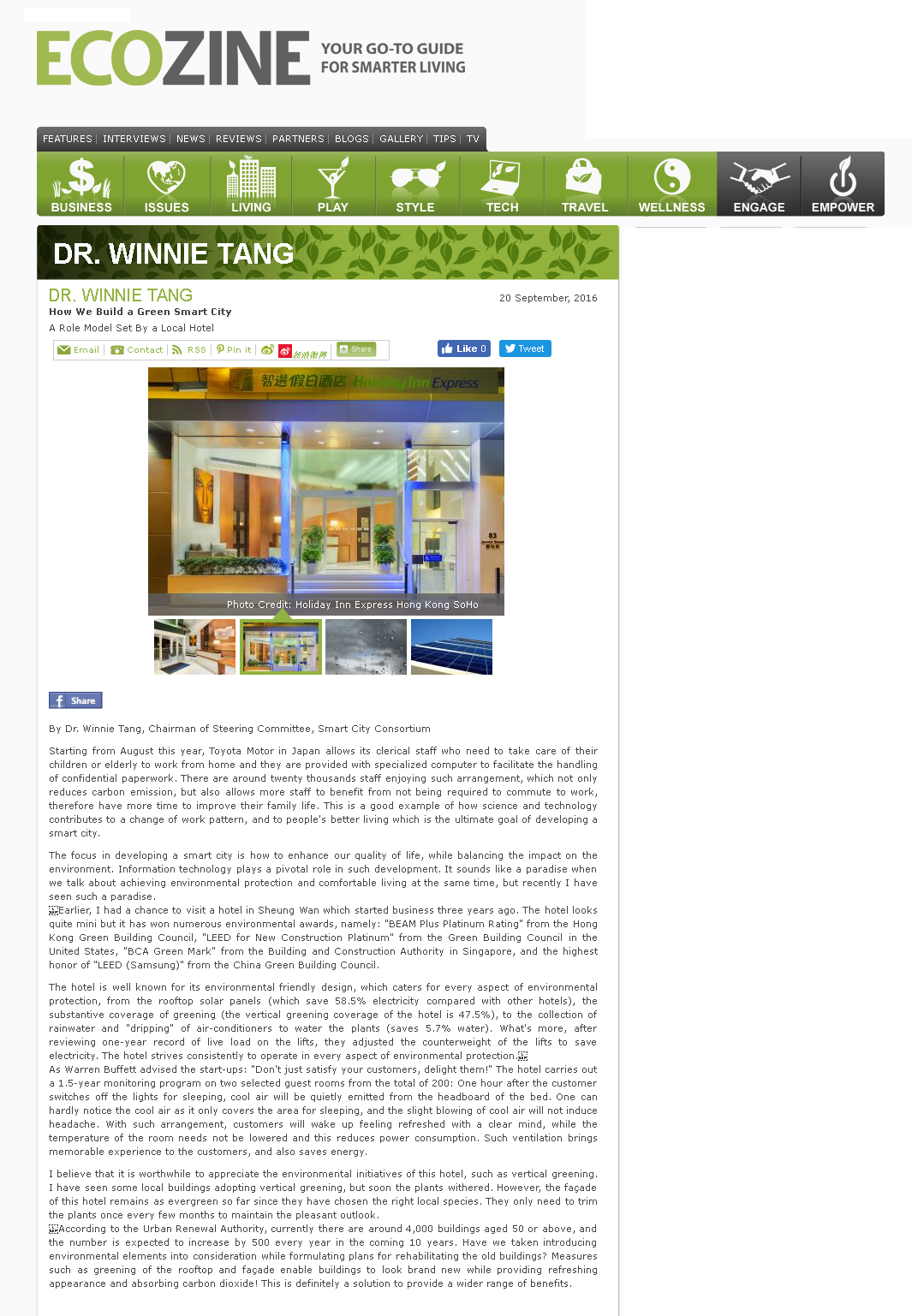網上版請按此

How We Build a Green Smart City
A Role Model Set By a Local Hotel
Starting from August this year, Toyota Motor in Japan allows its clerical staff who need to take care of their children or elderly to work from home and they are provided with specialized computer to facilitate the handling of confidential paperwork. There are around twenty thousands staff enjoying such arrangement, which not only reduces carbon emission, but also allows more staff to benefit from not being required to commute to work, therefore have more time to improve their family life. This is a good example of how science and technology contributes to a change of work pattern, and to people's better living which is the ultimate goal of developing a smart city.
The focus in developing a smart city is how to enhance our quality of life, while balancing the impact on the environment. Information technology plays a pivotal role in such development. It sounds like a paradise when we talk about achieving environmental protection and comfortable living at the same time, but recently I have seen such a paradise.
Earlier, I had a chance to visit a hotel in Sheung Wan which started business three years ago. The hotel looks quite mini but it has won numerous environmental awards, namely: "BEAM Plus Platinum Rating" from the Hong Kong Green Building Council, "LEED for New Construction Platinum" from the Green Building Council in the United States, "BCA Green Mark" from the Building and Construction Authority in Singapore, and the highest honor of "LEED (Samsung)" from the China Green Building Council.
The hotel is well known for its environmental friendly design, which caters for every aspect of environmental protection, from the rooftop solar panels (which save 58.5% electricity compared with other hotels), the substantive coverage of greening (the vertical greening coverage of the hotel is 47.5%), to the collection of rainwater and "dripping" of air-conditioners to water the plants (saves 5.7% water). What's more, after reviewing one-year record of live load on the lifts, they adjusted the counterweight of the lifts to save electricity. The hotel strives consistently to operate in every aspect of environmental protection.
As Warren Buffett advised the start-ups: "Don't just satisfy your customers, delight them!" The hotel carries out a 1.5-year monitoring program on two selected guest rooms from the total of 200: One hour after the customer switches off the lights for sleeping, cool air will be quietly emitted from the headboard of the bed. One can hardly notice the cool air as it only covers the area for sleeping, and the slight blowing of cool air will not induce headache. With such arrangement, customers will wake up feeling refreshed with a clear mind, while the temperature of the room needs not be lowered and this reduces power consumption. Such ventilation brings memorable experience to the customers, and also saves energy.
I believe that it is worthwhile to appreciate the environmental initiatives of this hotel, such as vertical greening. I have seen some local buildings adopting vertical greening, but soon the plants withered. However, the façade of this hotel remains as evergreen so far since they have chosen the right local species. They only need to trim the plants once every few months to maintain the pleasant outlook.
According to the Urban Renewal Authority, currently there are around 4,000 buildings aged 50 or above, and the number is expected to increase by 500 every year in the coming 10 years. Have we taken introducing environmental elements into consideration while formulating plans for rehabilitating the old buildings? Measures such as greening of the rooftop and façade enable buildings to look brand new while providing refreshing appearance and absorbing carbon dioxide! This is definitely a solution to provide a wider range of benefits.
Dr. Winnie Tang
Chairman of Steering Committee, Smart City Consortium